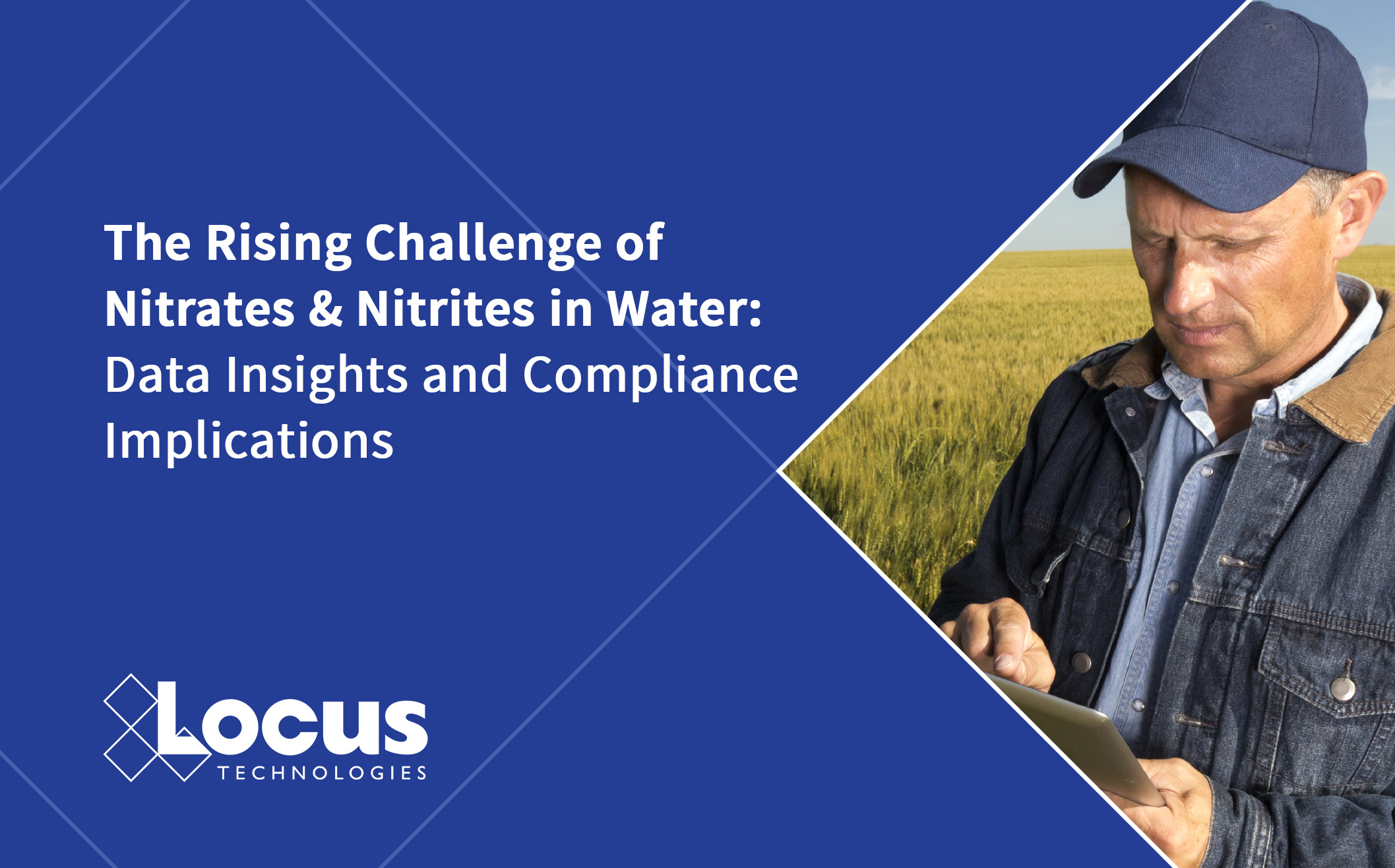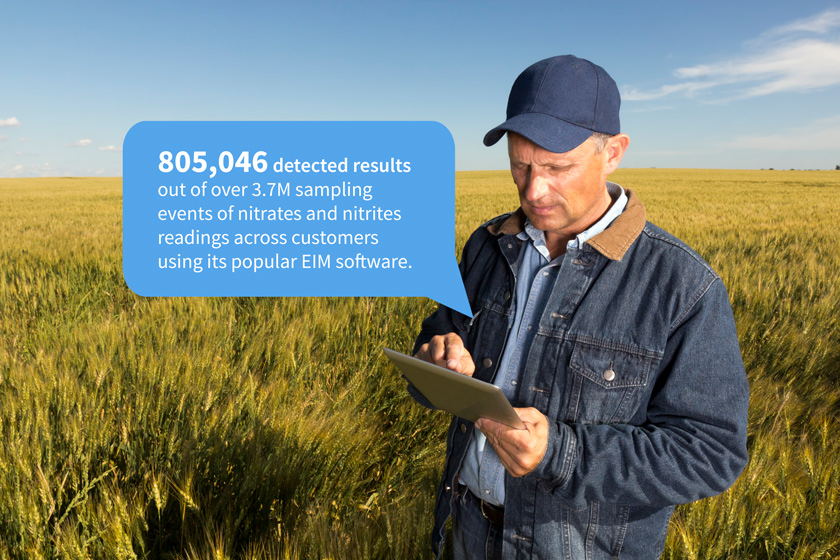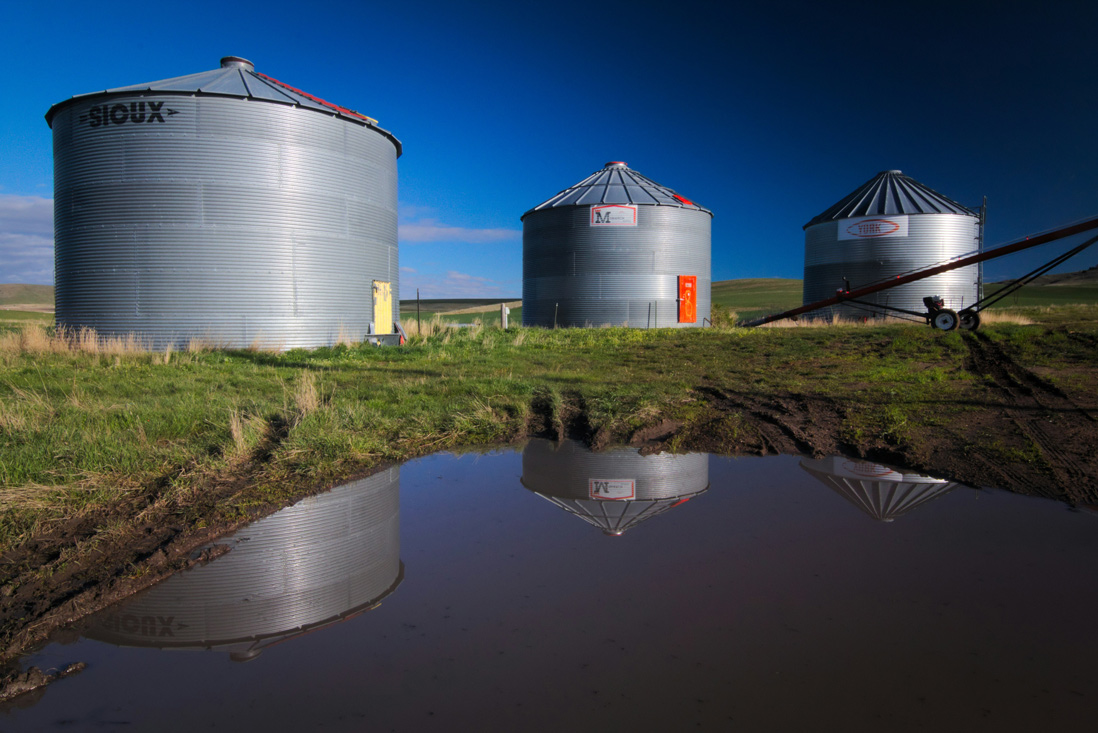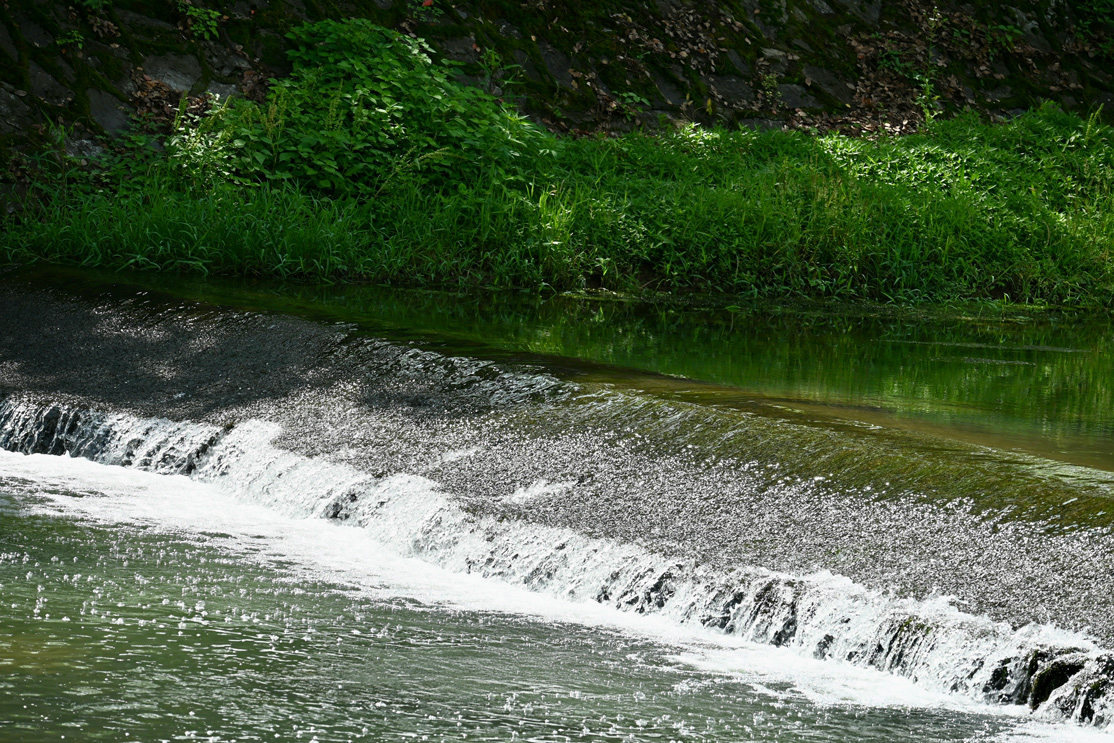The Rising Challenge of Nitrates & Nitrites in Water: Data Insights and Compliance Implications
By Laura Underwood

Reading time: 3 minutes 29 seconds
Tldr
- Nitrates and nitrites are the most frequently detected contaminants in Locus Technologies’ water quality database, with over 805,000 detections across 3.7 million sampling events.
- Excess nitrogen from agriculture and livestock practices contaminates drinking water, driving U.S. EPA and EU regulations that set strict limits to protect public health.
- Robust monitoring and data management tools help farmers, utilities, and regulators track nitrate trends, mitigate risks, and ensure compliance with global water quality standards.

Nitrates (NO₃) and nitrites (NO₂) are naturally occurring forms of nitrogen that are essential for plant growth, which is why they are so heavily used in modern agriculture. However, when excessive nitrogen ends up in waterways, it becomes a public health and environmental problem. This article explains (1) how nitrates and nitrites enter water from agricultural and livestock practices, (2) U.S. and EU rules that apply today, and (3) why farmers, utilities, and public-health officials should track these chemicals in water.
Locus Technologies, a SaaS provider in the environmental space, surveyed its multitenant database and found 805,046 detected results out of over 3.7M sampling events of nitrates and nitrites readings across customers using its popular EIM software. It represents the most detected chemical in our database.

Farmers rely on nitrogen to produce high crop yields. Nitrogen comes from two main sources: synthetic fertilizers (such as ammonium nitrate and urea) and organic sources, including livestock manure. After application to fields or storage in manure lagoons, nitrogen transforms soil and water. Microbes convert organic nitrogen and ammonium into nitrate (a process called nitrification); nitrate is very soluble and moves easily with rain and irrigation into groundwater or overland to streams and lakes. Heavy rainfall events, poor manure management, and concentrated animal feeding operations (CAFOs) that store or spread large volumes of manure increase the chance of nitrate losses to water. Surface runoff, tile drainage, seepage from manure storage, and leaching to groundwater are the typical pathways.
In the United States, the U.S. Environmental Protection Agency’s legally enforceable Maximum Contaminant Level (MCL) for nitrate as nitrogen is 10 mg/L (often reported as 10 mg/L nitrate-nitrogen or 10 mg/L expressed as nitrate, depending on units); for nitrite, the MCL is 1 mg/L. These standards are designed to protect infants from methemoglobinemia (“blue baby” syndrome) and other acute health effects. Public water systems are not allowed to exceed these MCLs. Agricultural runoff is regulated differently from point sources. Concentrated animal feeding operations (CAFOs) that discharge to waters can require NPDES permits and must follow nutrient and manure management conditions under EPA rules or equivalent state programs. Many nutrient-management requirements are implemented at the state level through NPDES permitting, state best-management practice programs, and conservation programs. However, diffuse runoff from fields is more challenging to regulate directly and is typically managed through conservation incentives and state programs.
In the European Union, member countries adhere to a drinking-water limit of 50 mg/L nitrate (NO₃⁻) as a protective threshold for drinking sources, as outlined in the Drinking Water and Groundwater Directives. The EU’s Nitrates Directive (91/676/EEC) is specifically aimed at reducing water pollution by nitrates from agricultural sources. It requires member states to identify Nitrate Vulnerable Zones, establish action programs (e.g., limits on manure spreading, closed application periods), and promote good agricultural practices.

High levels of nitrates and nitrites in water can have negative impacts on both human health and the environment. For humans, the highest concern is for infants under six months, as high nitrate and/or nitrite levels in drinking water can interfere with oxygen transport in the blood (methemoglobinemia). Beyond infants, concerns exist about thyroid effects, and emerging evidence suggests a link to other potential health risks. Excess nitrate, for instance, fuels algal blooms and eutrophication in lakes, rivers, and coastal waters. Blooms can create low oxygen “dead zones,” killing fish and reducing water quality for recreation and fisheries, which in turn affects local economies and biodiversity. Lastly, utilities that draw from contaminated sources may face costly treatment upgrades (ion exchange, reverse osmosis) to meet MCLs. For private wells, which are not monitored by public programs, homeowners may be unaware of dangerous concentrations until someone falls ill.
Public and private stakeholders, such as farmers, utilities, and public health officials, should consider making a robust monitoring program for these pollutants a routine practice. Software providers, such as Locus Technologies, offer a broad portfolio of environmental data management apps that can help customers manage all their environmental data with ease. Robust monitoring of nitrates can serve as an early warning system for vulnerable populations. Routine monitoring can help to identify whether nitrate increases are seasonal, linked to land application practices, or driven by extreme weather events — crucial for targeting solutions. Additionally, data show whether nitrate-reduction programs, cover crops, buffer strips, or manure management rules are effective. Detecting rising nitrate trends early can enable source-control measures that are cheaper than other tertiary treatment options.
Laura Underwood, PhD
Director of Digital Water Services, Locus Technologies
Dr. Underwood brings over two decades of leadership in the water and environmental sectors, most recently serving as Senior Director of Strategy & Innovation at Veolia. She has also held key roles in water utility management, including serving as the Director of Water Quality & Environmental Compliance for a Municipal Water business unit. A long-time contributor to the American Water Works Association (AWWA) and a passionate advocate for digital transformation, Laura has built a national reputation for advancing smart, sustainable water practices across the utility and industrial landscapes.
Locus is the only self-funded water, air, soil, biological, energy, and waste EHS software company that is still owned and managed by its founder. The brightest minds in environmental science, embodied carbon, CO2 emissions, refrigerants, and PFAS hang their hats at Locus, and they’ve helped us to become a market leader in EHS software. Every client-facing employee at Locus has an advanced degree in science or professional EHS experience, and they incubate new ideas every day – such as how machine learning, AI, blockchain, and the Internet of Things will up the ante for EHS software, ESG, and sustainability.




